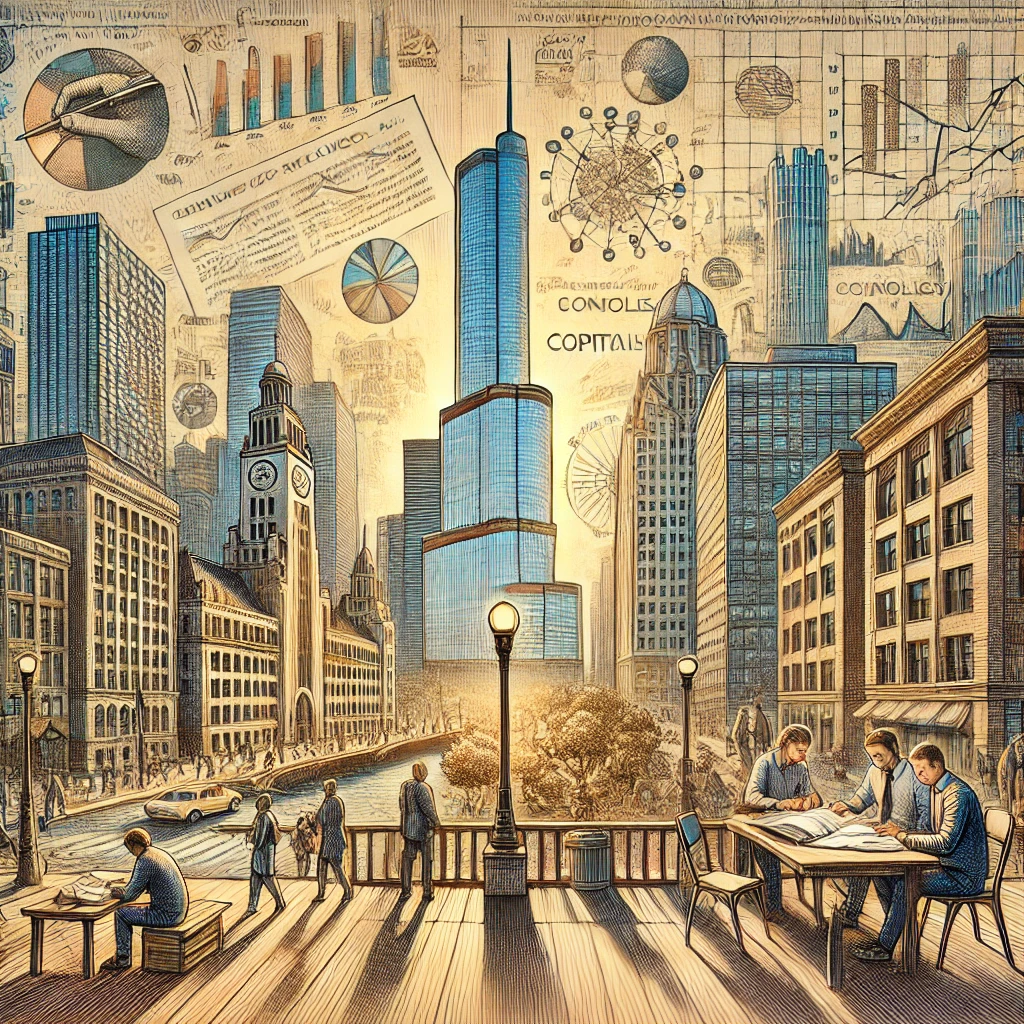Introduction
Peter L. Berger and Thomas Luckmann’s seminal work, “The Social Construction of Reality” (1966), presents a comprehensive framework for understanding the societal processes through which knowledge and reality are constructed. This treatise, emerging from the phenomenological tradition in sociology, has profoundly influenced social theory, challenging positivist notions of objective reality and emphasizing the role of human interaction in shaping our understanding of the world. This article provides an expanded academic analysis of the central ideas proposed by Berger and Luckmann.

Fundamental Concepts
1. Reality as a Social Construction
Berger and Luckmann begin their discourse by defining the key terms “reality” and “knowledge.” Their conceptualization challenges the notion of an inherently objective reality, positing instead that what we perceive as “real” is shaped by social processes and varies across cultures and historical contexts. They define reality as “a quality appertaining to phenomena that we recognize as having a being independent of our own volition” and knowledge as “the certainty that phenomena are real and that they possess specific characteristics” (Berger & Luckmann, 1966, p. 13).
This perspective aligns with the social constructionist paradigm, which posits that many aspects of our social world are not given by nature but are created and maintained through social interactions and shared meanings. For instance, the concept of money as a medium of exchange is not an inherent property of paper or metal coins but a socially agreed-upon reality that varies across cultures and time periods.
2. The Process of Reality Construction
Berger and Luckmann propose a tripartite dialectical process through which humans construct social reality:
a) Externalization
In this initial phase, humans project their subjective meanings onto the world through their activities and creations. As the authors describe, externalization is “the ongoing outpouring of human being into the world, both in the physical and the mental activity of men” (p. 104).
Example: The creation of language exemplifies externalization. Humans externalize their thoughts and experiences by developing words and grammatical structures to represent them. For instance, the Inuit languages have numerous words for different types of snow, reflecting the externalization of their lived experiences in an Arctic environment.
b) Objectivation
Through objectivation, externalized human products acquire an apparent objective reality, seeming to exist independently of their human creators. Berger and Luckmann state, “Objectivation is the process whereby the externalized products of human activity attain the character of objectivity” (p. 78).
Example: The institution of marriage illustrates objectivation. While marriage practices vary across cultures and have evolved over time, in many societies, marriage has become an objective social reality, complete with legal, economic, and social implications that seem to exist independently of individual participants.
c) Internalization
In the final stage, individuals reincorporate the now seemingly objective social world into their subjective consciousness. The authors note, “Internalization is the immediate apprehension or interpretation of an objective event as expressing meaning” (p. 61).
Example: The internalization of gender roles demonstrates this process. Children observe and internalize socially constructed ideas about appropriate behavior for men and women, often accepting these roles as natural and inevitable rather than as products of social interaction.
3. Institutionalization
A critical aspect of Berger and Luckmann’s theory is the concept of institutionalization. Through habitualization—the repetition of actions that become patterns—individual behaviors become routinized and predictable. Institutions emerge as “reciprocal typifications of habitualized actions by types of actors” (p. 54).
Example: The development of formal education systems illustrates institutionalization. What began as informal knowledge transmission within families and communities has, over time, become a highly structured institution with standardized curricula, professional educators, and complex organizational hierarchies.
4. Legitimation and Reification
For institutions to persist, they must be legitimated—explained and justified to ensure their continuity. Legitimation can range from simple maxims to complex symbolic universes like religion or ideology. Berger and Luckmann describe legitimation as “second-order objectivation of meaning” (p. 92).
Example: The legitimation of political systems demonstrates this process. Democratic systems, for instance, are often legitimated through concepts like social contract theory, popular sovereignty, and the idea of individual rights.
Reification occurs when social constructions are treated as natural, inevitable, or beyond human control. The authors define reification as “the apprehension of the products of human activity as if they were something else than human products—as facts of nature, results of cosmic laws, or manifestations of divine will” (p. 89).
Example: Economic systems, such as capitalism or socialism, are often reified. Despite being human creations, these systems are frequently perceived as natural orders or inevitable stages of social development, obscuring their socially constructed nature.
5. Socialization: Primary and Secondary
Berger and Luckmann distinguish between two phases of socialization:
a) Primary Socialization
This occurs in early childhood when individuals first encounter and internalize the social world. It is particularly influential because the individual has little choice in the matter. The family typically serves as the primary agent of socialization.
Example: Language acquisition during childhood exemplifies primary socialization. Children internalize not just vocabulary and grammar but also cultural norms, values, and worldviews embedded in their native language.
b) Secondary Socialization
This occurs later in life when individuals are introduced to new institutions, roles, and practices. Through this process, individuals adapt to specialized sectors of society.
Example: Professional training, such as medical school, illustrates secondary socialization. Medical students not only acquire technical knowledge but also internalize the norms, ethics, and culture of the medical profession.
6. Symbolic Universes
Berger and Luckmann introduce the concept of symbolic universes to explain the broader cultural frameworks that unify and legitimize social institutions. These overarching worldviews provide meaning and coherence to individual and collective life, offering “a comprehensive integration of all meanings that originate in institutional processes” (p. 95).
Example: Religious belief systems function as symbolic universes, providing explanations for existence, moral guidelines, and frameworks for understanding both everyday experiences and transcendent phenomena. For instance, Christianity offers a comprehensive worldview that includes creation narratives, moral codes, and conceptions of afterlife, integrating various aspects of individual and social life into a coherent whole.
Conclusion
Berger and Luckmann’s “The Social Construction of Reality” emphasizes the reciprocal relationship between individuals and society. As they succinctly state, “Society is a human product. Society is an objective reality. Man is a social product” (p. 61). This dialectical relationship underscores how human agency, social structures, and institutions interact in a continuous cycle of reality construction.
The implications of this work extend far beyond sociology, influencing fields such as psychology, anthropology, and political science. In the contemporary context, Berger and Luckmann’s insights remain relevant for understanding phenomena such as the role of media in shaping social reality, the construction of national and ethnic identities, and the evolution of social norms in the digital age.
By elucidating the processes through which social reality is constructed, maintained, and transformed, “The Social Construction of Reality” provides a valuable theoretical framework for analyzing and understanding the complex interplay between individuals, institutions, and society at large.
References
- Berger, P. L., & Luckmann, T. (1966). The social construction of reality: A treatise in the sociology of knowledge. Penguin Books.
- Burr, V. (2015). Social constructionism (3rd ed.). Routledge.
- Couldry, N., & Hepp, A. (2017). The mediated construction of reality. Polity Press.
- Knoblauch, H., & Wilke, R. (2016). The common denominator: The reception and impact of Berger and Luckmann’s The Social Construction of Reality. Human Studies, 39(1), 51-69.
- Lukács, G. (1971). History and class consciousness: Studies in Marxist dialectics (R. Livingstone, Trans.). MIT Press. (Original work published 1923)
- Vera, H. (2016). Rebuilding a classic: The social construction of reality at 50. Cultural Sociology, 10(1), 3-20.


